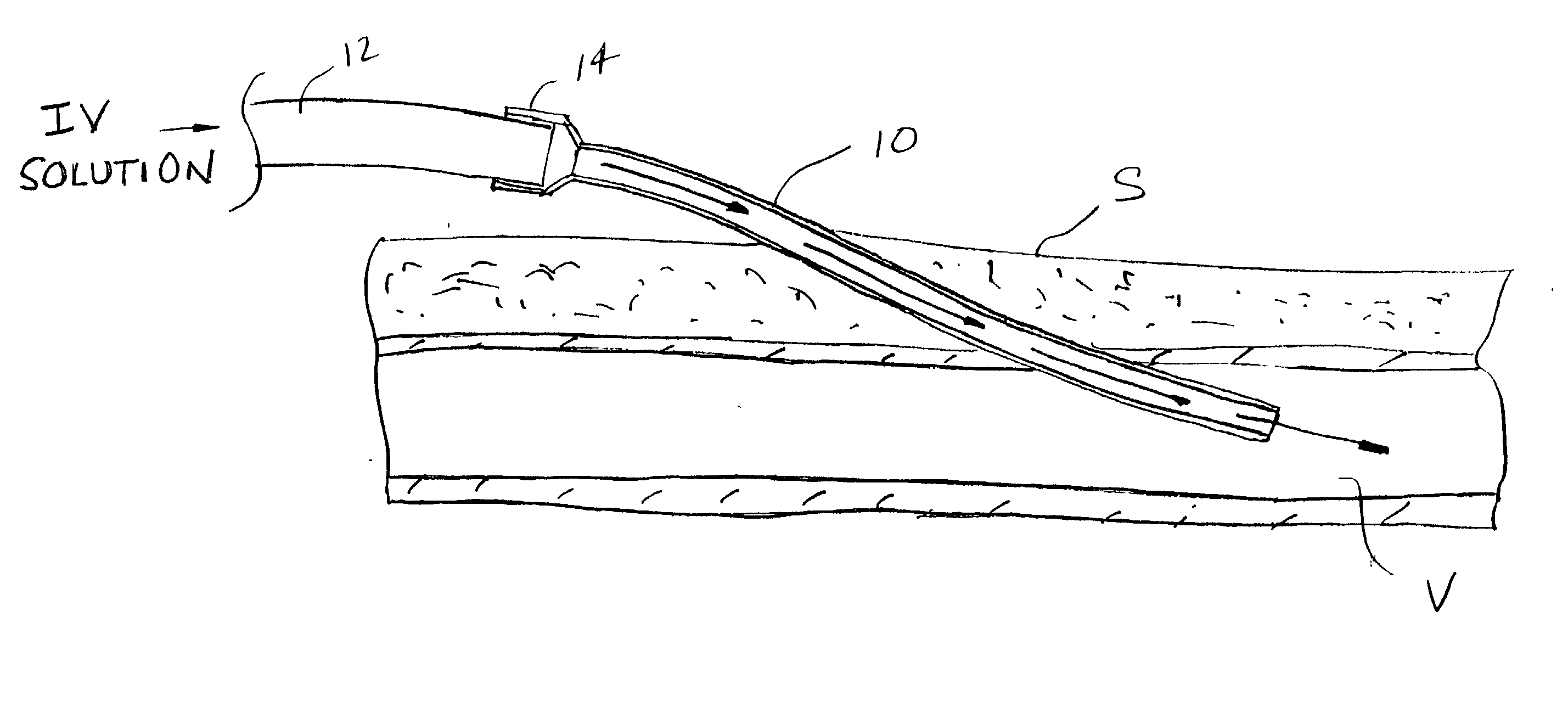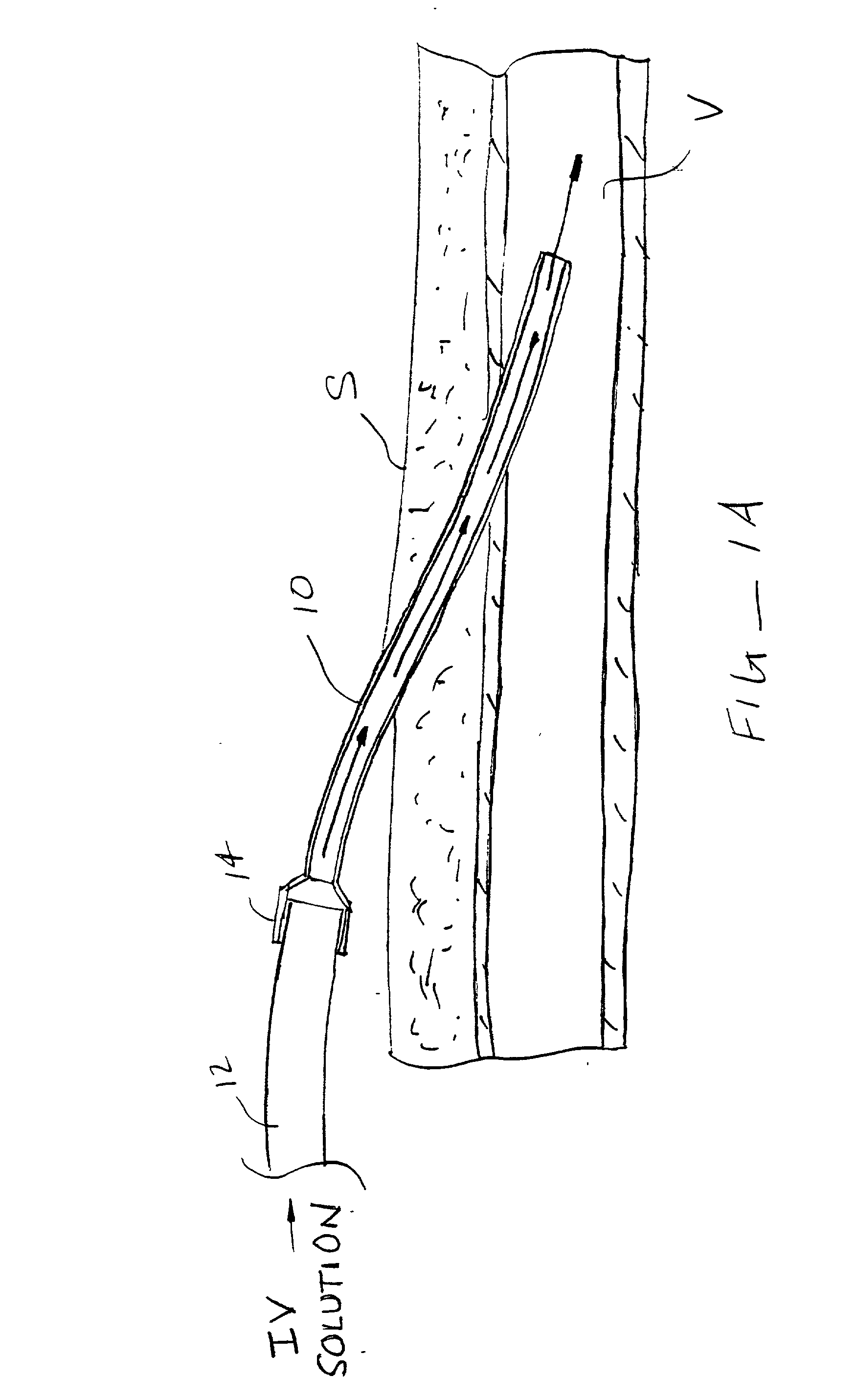Methods and kits for locking and disinfecting implanted catheters
- Summary
- Abstract
- Description
- Claims
- Application Information
AI Technical Summary
Benefits of technology
Problems solved by technology
Method used
Image
Examples
Embodiment Construction
[0024] Referring now to FIGS. 1A and 1B, a method according to the present invention for locking a transcutaneously implanted venous catheter 10 will be described. The venous catheter 10 will be implanted through a patient's skin S into a vein V for infusion of the patient. When it is desired to disconnect the patient from the source of infusion, it will be necessary to lock the catheter to inhibit plugging and fouling caused by coagulation, and preferably to further eradicate existing infection and / or inhibit the risk of infection. Shown in FIG. 1A, a tube 12 containing an IV solution will normally be connected to the proximal hub 14 of the catheter 10. The IV line 12 will be disconnected, and the catheter 10 usually flushed with saline or other flushing solution. After the flushing is completed, a solution of a lower alcohol and an additive can be introduced to fill the inner lumen of the catheter 10, as shown in FIG. 1B. Usually, a sufficient volume of the solution (as set forth ...
PUM
 Login to View More
Login to View More Abstract
Description
Claims
Application Information
 Login to View More
Login to View More - R&D
- Intellectual Property
- Life Sciences
- Materials
- Tech Scout
- Unparalleled Data Quality
- Higher Quality Content
- 60% Fewer Hallucinations
Browse by: Latest US Patents, China's latest patents, Technical Efficacy Thesaurus, Application Domain, Technology Topic, Popular Technical Reports.
© 2025 PatSnap. All rights reserved.Legal|Privacy policy|Modern Slavery Act Transparency Statement|Sitemap|About US| Contact US: help@patsnap.com



